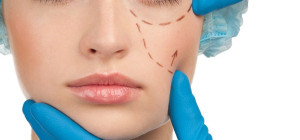 Women aren’t the only ones who suffer from cellulite and stretch marks. Men can suffer from both, too but men’s bodies are less scrutinized than women’s. Cellulite and stretch marks are two common issues that can cause a woman to feel insecure with her body.
Women aren’t the only ones who suffer from cellulite and stretch marks. Men can suffer from both, too but men’s bodies are less scrutinized than women’s. Cellulite and stretch marks are two common issues that can cause a woman to feel insecure with her body.
Surgery, store-bought topical creams, and DIY at-home recipes are three ways to fight off, and hopefully reduce, cellulite and stretch marks. Unfortunately, both are something women have to deal with as they age and every the most active, fit woman can get both stretch marks and cellulite.
Model and TV personality Chrissy Teigen is one celebrity who routinely posts photos on her social media of her cellulite in an effort to encourage body-positivity. Yes, even models can get cellulite.
What Causes Stretch Marks?
As the name implies, stretch marks are caused by the skin stretching. This is typically due to recent weight gain or weight loss. Teenagers who hit a growth spurt can suffer from stretch marks and they are a very common side effect of pregnancy.
Stretch marks appear on the skin as a different color and texture as your normal skin. The color can range from bright pink to light gray. While stretch marks aren’t painful, they can feel strange to the touch in the sense of an indentation or a ridge. The areas most prone to stretch marks are the stomach, thighs, and arms.
What Causes Cellulite?
As women age, their skin becomes more likely to sag. Dimpled, saggy skin is the physical manifestation of cellulite. It usually occurs in the buttocks and thighs. Understanding what causes cellulite on the butt, thighs and other less prevalent areas of the body can help women make lifestyle changes to minimize its appearance.
Statistically, 80 – 90% of women will develop cellulite in their lifetime, particularly as a woman approaches the age of menopause. This phenomenon is believed to be due to the decreased blood flow to the tissue under the skin.
Over-The-Counter (OTC) Treatments
Many companies promote over-the-counter “cures” for stretch marks or cellulite, but research shows that they are only temporary solutions. Diet and lifestyle can be adjusted to reduce the effects of cellulite. Stretch marks fade in time, but they never completely go away, even with treatments.
Since both skin problems have very different causes, over-the-counter treatments can vary.
OTC Stretch Mark Treatments:
Stretch mark creams found in the market use an ingredient called tretinoin, a derivative of Vitamin A. The cream restores collagen, which is a protein that gives your skin its elasticity. Brand names that include this ingredient are Retin-A and Renova.
It is not recommended to use this topical cream while you’re pregnant and some people can develop itchy skin where they use the cream.
OTC Cellulite Treatments:
Believe it or not, one of the best treatments for cellulite is a topical caffeine cream. Caffeine has been shown to dehydrate cells, which can reduce the appearance of cellulite. The OTC creams need to be applied daily.
Many of the OTC treatment creams for cellulite include retinol their main ingredient. Retinol is considered the holy grail of anti-aging ingredients. It can help accelerate skin renewal, which in turn makes the skin firmer and smoother. It does take several months of use before any results are noticeable.
Natural At-Home Remedies
If you are wary of OTC treatments and would prefer to use natural ingredients, there are several ways to cure cellulite and stretch marks naturally. In fact, many of the OTC treatments are based on the effectiveness of all-natural ingredients.
Natural At-Home Stretch Marks Remedies:
Applied topically, four proven at-home remedies for stretch marks include Aloe Vera, Vitamin A, Cocoa Butter Coconut Oil. All four ingredients are routinely used in most OTC stretch mark creams.
Some people swear by using a mixture of sugar, olive oil and lemon juice as a microdermabrasion rub. Exfoliating the skin with a natural sugar scrub removes the top layer of dead cells, leaving your skin radiant and clean.
Natural At-Home Cellulite Remedies:
Grape seed extract, ginkgo biloba and caffeine have all shown moderate effectiveness in reducing cellulite. These therapies can be applied orally, topically or by injection.
Compression garments, such as socks or pantyhose can reduce the visibility of cellulite. The garments have been known to compress arteries, which increases blood flow, an effective way to reduce cellulite.
Laser Surgery Options
If you prefer more immediate results, there are laser treatment options for both cellulite and stretch marks. Celebrities, such as Kim Kardashian, have opted for laser treatments.
However, if you go down this treatment route, be sure to find a reputable dermatologist.
Laser Surgery for Cellulite:
Laser treatment for cellulite inserts a small laser probe under the skin. When the laser is fired, it causes the tissue to break up, reducing the appearance of cellulite.
This treatment also increases collagen production, which also minimizes cellulite.
Laser Surgery for Stretch Marks:
The laser surgery treatment for stretch marks is called pulsed dye therapy. This treatment targets the blood vessels, reducing the color and visibility of stretch marks. It is most effective on stretch marks that are pink or red. It also encourages the growth of collagen.







